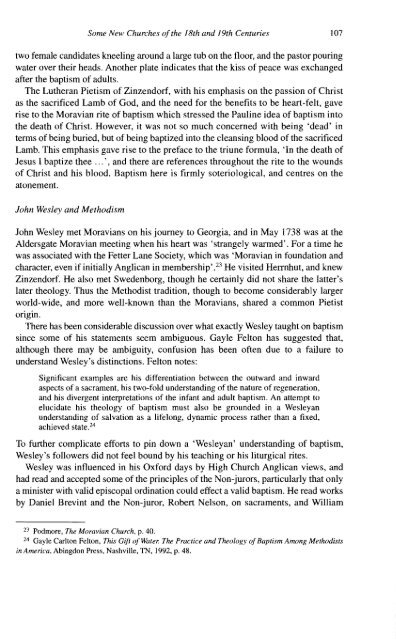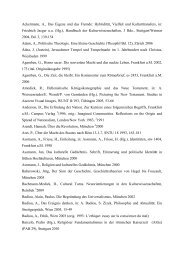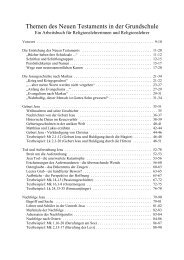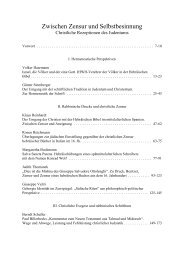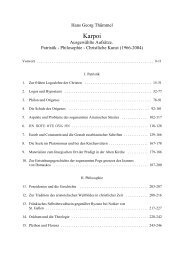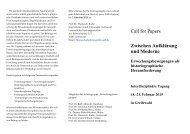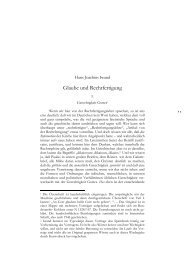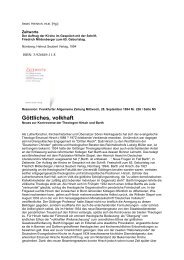The Radical Reformation Tradition: Anabaptists, English Separatists ...
The Radical Reformation Tradition: Anabaptists, English Separatists ...
The Radical Reformation Tradition: Anabaptists, English Separatists ...
- No tags were found...
Create successful ePaper yourself
Turn your PDF publications into a flip-book with our unique Google optimized e-Paper software.
Some New Churches ofthe 18th and 19th Centuries 107two female candidates kneeling around a large tub on the floor, and the pastor pouringwater over their heads. Another plate indicates that the kiss of peace was exchangedafter the baptism of adults.<strong>The</strong> Lutheran Pietism of Zinzendorf, with his emphasis on the passion of Christas the sacrificed Lamb of God, and the need for the benefits to be heart-felt, gaverise to the Moravian rite of baptism which stressed the Pauline idea of baptism intothe death of Christ. However, it was not so much concerned with being 'dead' interms of being buried, but of being baptized into the c1eansing blood of the sacrificedLamb. This emphasis gave rise to the preface to the triune formula, 'In the death ofJesus I baptize thee ... " and there are references throughout the rite to the woundsof Christ and his blood. Baptism here is firmly soteriological, and centres on theatonement.lohn Wesley and MethodismJohn Wesley met Moravians on his journey to Georgia, and in May 1738 was at theAldersgate Moravian meeting when his heart was 'strangely warmed'. For a time hewas associated with the Fetter Lane Society, which was 'Moravian in foundation andcharacter, even if initially Anglican in membership' .23 He visited Herrnhut, and knewZinzendorf. He also met Swedenborg, though he certainly did not share the latter'slater theology. Thus the Methodist tradition, though to become considerably largerworld-wide, and more well-known than the Moravians, shared a common Pietistorigin.<strong>The</strong>re has been considerable discussion over what exactly Wesley taught on baptismsince some of his statements seem ambiguous. Gayle Felton has suggested that,although there may be ambiguity, confusion has been often due to a failure tounderstand Wesley's distinctions. Felton notes:Significant examples are his differentiation between the outward and inwardaspects of a sacrament, his two-fold understanding of the nature of regeneration,and his divergent interpretations of the infant and adult baptism. An attempt toelucidate his theology of baptism must also be grounded in a Wesleyanunderstanding of salvation as a life!ong, dynamic process rather than a fixed,achieved state. 24To further complicate efforts to pin down a 'Wesleyan' understanding of baptism,Wesley's followers did not feel bound by his teaching or his liturgical rites.Wesley was influenced in his Oxford days by High Church Anglican views, andhad read and accepted some of the principles of the Non-jurors, particularly that onlya minister with valid episcopal ordination could effect a valid baptism. He read worlesby Daniel Brevint and the Non-juror, Robert Nelson, on sacraments, and William23 Podmore, <strong>The</strong> Moravian Church, p. 40.24 Gayle Carlton FeIton, This Giß (!(Water. <strong>The</strong> Practice and <strong>The</strong>ology ofBaptism Among Methodistsin America, Abingdon Press, Nashville, TN, 1992, p. 48.


